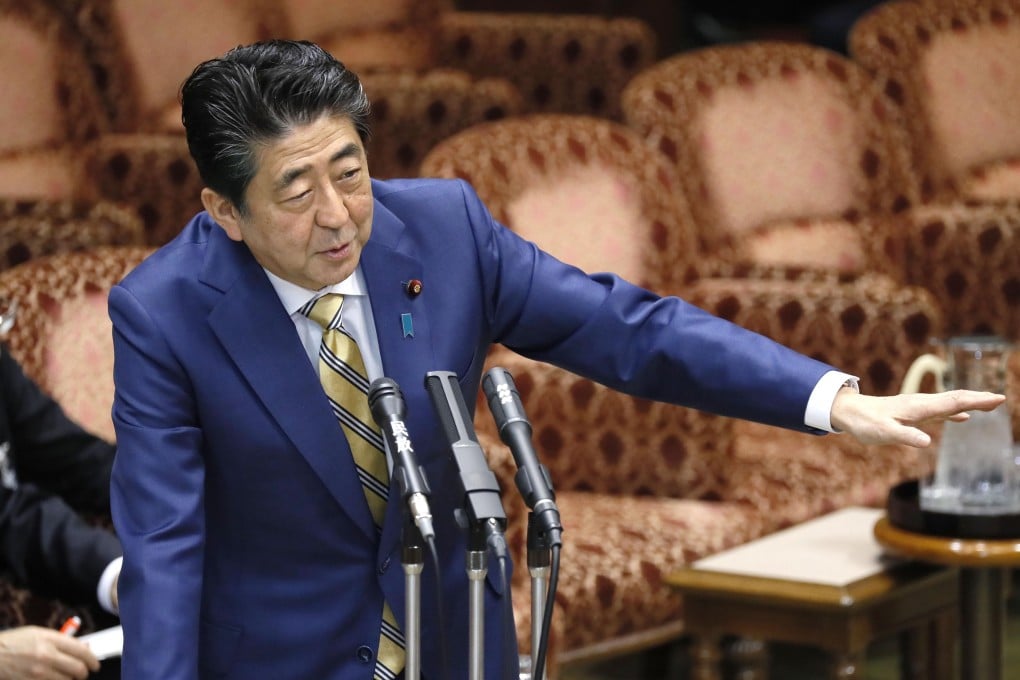Advertisement
How long can Japanese Prime Minister Shinzo Abe stay in power?
- The 64-year-old will become Japan’s longest serving prime minister in November and shows no signs of slowing down yet
- He has led his Liberal Democratic Party for an unparalleled four terms, and some supporters want the rules changed so that he can run again
Reading Time:4 minutes
Why you can trust SCMP
0

Prime Minister Shinzo Abe has dominated Japanese politics ever since winning the national election in 2012 and returning from opposition for a second term in office. His supporters in the ruling conservative Liberal Democratic Party (LDP) publicly suggested in the Japanese media this week that the party’s rules be changed again, so that Abe can contest for an unprecedented fourth consecutive term – effectively his fifth term as LDP president – and hence possibly continue as prime minister until 2024.
Abe, 64, is set to become Japan’s longest-serving prime minister in November this year. This longevity makes him one of the most politically successful contemporary leaders among the world’s democracies. Extending his tenure would allow him to continue to enjoy his position as one of the world’s senior diplomatic figures and promote a greater international and strategic role for Japan.

Abe will also be able to extend his responsibility for the overall stewardship of what is still the world’s third-largest economy, continuing his stimulus policy marketed as “Abenomics”. Possibly the greatest motivation of all is that another term would give Abe more chance to pursue changes to Article 9 of the constitution and in doing so formally recognise the country’s Self-Defence Forces.
Abe’s success in retaining power at the 2014 and 2017 general elections has entrenched his dominance over the LDP’s various factions. Re-elected unopposed as party president for a second consecutive term in 2015, Abe’s factional supporters used his personal political authority to change the leadership regulations at the 2017 party conference, raising the number of consecutive terms the party president can serve to three from the previous maximum of two. Abe was then able to run again in the party leadership ballot last September, beating solo challenger Shigeru Ishiba to win a third term and remain prime minister until 2021.
The rise, fall and return of Shinzo Abe
Promoters of a fourth term for Abe, most prominently LDP Secretary-General Toshihiro Nikai and chairman of the LDP’s Diet Affairs Committee Hiroshi Moriyama, have stated at press conferences in Tokyo this week that Abe would be “hard to replace”. Nikai, who heads one the LDP’s seven factions, was one of the main backers for the change to party rules allowing Abe an extra term. As the Nikai faction does not have any likely presidential candidates, members from the rival Kishida and Ishiba factions have accused Nikai of pushing another term for Abe so he can remain secretary general.

Advertisement
